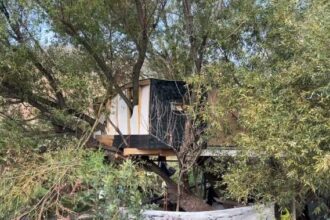As inflation continues to squeeze household budgets across Canada, seniors living on fixed incomes face increasingly difficult financial challenges. The Old Age Security (OAS) program, a cornerstone of Canadian retirement support since 1952, has come under renewed scrutiny with mounting calls for a comprehensive overhaul to address modern economic realities.
“The system was designed for a different era,” explains Dr. Marion Reynolds, retirement policy expert at the University of Toronto. “When OAS was established, Canadians had shorter lifespans and different economic pressures than today’s retirees face.”
Recent data from Statistics Canada reveals that nearly 22% of Canadian seniors are living at or near the poverty line, with single elderly women particularly vulnerable. This troubling statistic has prompted advocacy groups to push for structural reforms beyond incremental adjustments.
The current OAS system provides a maximum monthly payment of $698.15 for those 65 and older, with additional Guaranteed Income Supplement (GIS) available for low-income seniors. However, critics argue these amounts have failed to keep pace with the true cost of living, especially in major urban centers where housing costs have skyrocketed.
“We’re seeing more seniors having to choose between medication, proper nutrition, or keeping their homes warm,” says Eleanor Nguyen, director of the National Senior Advocacy Coalition. “The clawback thresholds also create situations where some seniors are effectively penalized for having modest retirement savings.”
The federal government implemented a 10% increase to OAS for seniors 75 and older in 2022, but many policy experts consider this insufficient. Finance Minister Chrystia Freeland has acknowledged the challenges, stating at a recent press conference that “ensuring dignity for Canadian seniors remains a priority, though fiscal constraints must be balanced with program sustainability.”
Alternative models from countries like New Zealand and Denmark have garnered attention for their more robust approaches to senior financial security. These systems typically feature higher baseline benefits with more gradual reduction rates as other income increases.
“Any meaningful reform needs to address the changing nature of work and retirement,” notes economist Paul Samuelson of the Canadian Economic Institute. “With many Canadians working well past traditional retirement age—often out of necessity rather than choice—we need a system that doesn’t create disincentives for continuing to earn income.”
The debate extends beyond benefit amounts to fundamental questions about program structure, eligibility requirements, and how benefits interact with other retirement income sources like the Canada Pension Plan and private savings vehicles.
Meanwhile, seniors like 72-year-old Winnipeg resident Margaret Collins feel caught in policy discussions that seem perpetually academic. “I worked for 45 years, paid into the system faithfully, and now I’m cutting back on basics just to keep afloat,” she told reporters. “The time for studies and consultations is past—we need action.”
As Canada’s population continues to age, with seniors projected to represent nearly 25% of the population by 2036, the sustainability and adequacy of the OAS program will only become more pressing. The question facing policymakers isn’t simply whether to increase benefits, but how to fundamentally reimagine retirement security for the 21st century.
How might a truly modernized senior support system balance fiscal responsibility with the moral obligation to ensure dignified living standards for those who built our nation?









